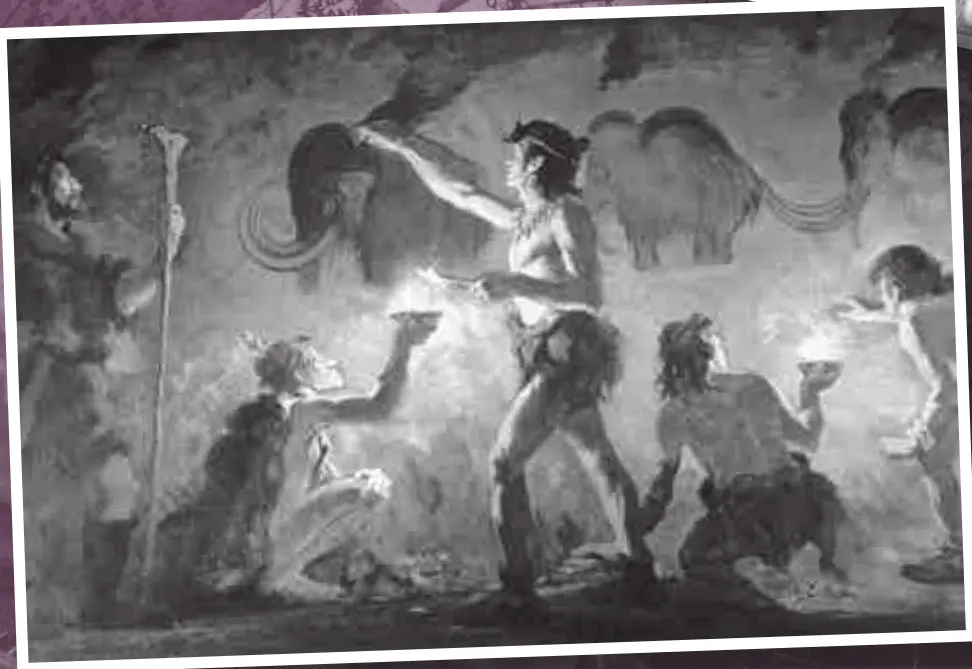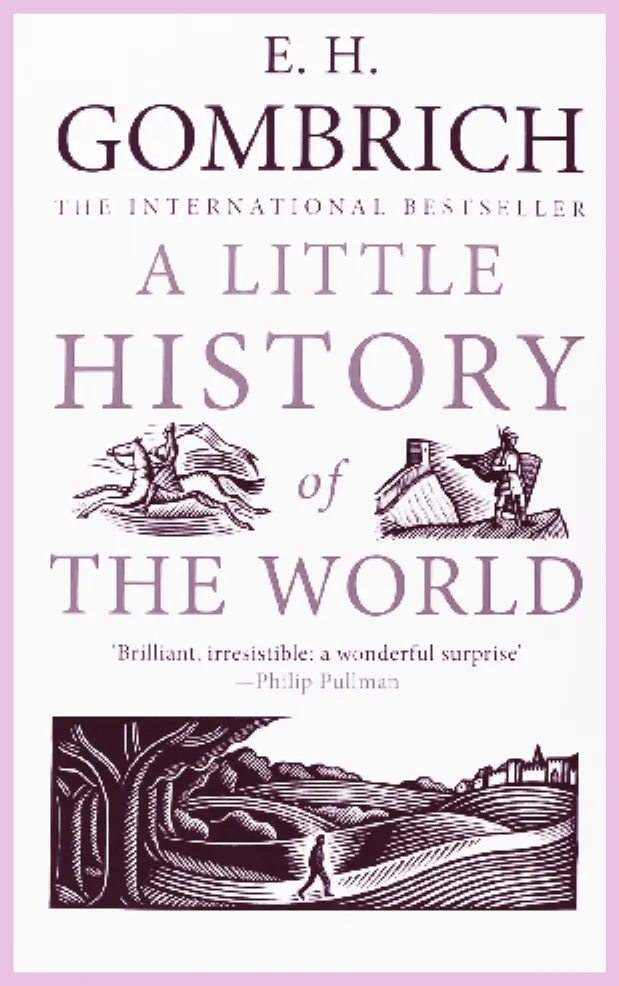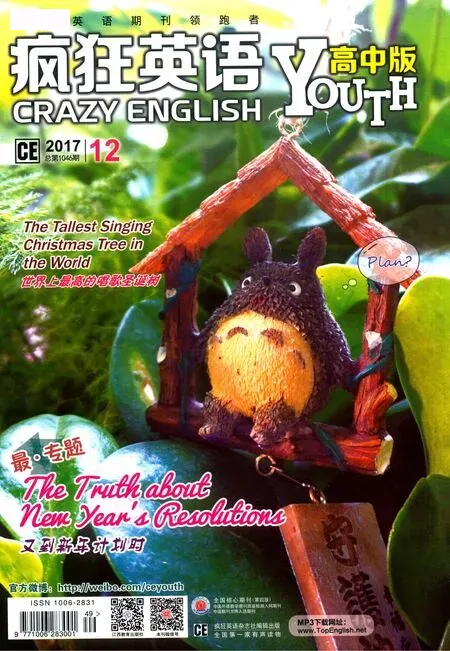A LittlE HistoRy oF thE WoRlD世界小史
⊙By E. H. Gombrich翻译:吴秀杰
A LittlE HistoRy oF thE WoRlD世界小史
⊙By E. H. Gombrich翻译:吴秀杰



用今天的话来说,《世界小史》是一本很“萌”的世界史通俗读物。
尽管恩斯特·贡布里希爵士(Sir Ernst Gombrich,1909-2001)学富五车,才高八斗,在美学与艺术史领域取得了各种学术成就,是近代公认的美学大师级人物,但他写的书可一点都不“高大上”——没有卖弄学问,没有故弄玄虚,他的文字平实幽默、简明流畅,从最初的《世界小史》到代表作《艺术的故事》(The Story of Art),都被视为相关领域最通俗易懂的论述作品。哪怕你还是个学生,哪怕你只是个外行人,都能从他的书中享受到知识带来的无穷乐趣。
他在《世界小史》土耳其版的前言中写道:“无论是现在还是过去,这本书都从来不能代替教科书。我希望我的读者能够放松,能够追踪历史,不必去写笔记,不必去记住人名和年代。我也答应你们,我是肯定不会拿这些东西考你们的。”
是的,这是一本你可以坐得安安稳稳,用看故事的心情去阅读的小书。准备好了吗?我们就从“Once upon a time”说起吧……
All stories begin with “Once upon a time.” And that’s just what this story is all about:what happened, once upon a time. Once you were so small that, even standing on1)tiptoes, you could barely reach your mother’s hand. Do you remember? Your own history might begin like this: “Once upon a time there was a small boy”—or a small girl—“and that small boy was me.” But before that you were a baby in a2)cradle. You won’t remember that, but you know it’s true. Your father and mother were also small once, and so was your grandfather, and your grandmother, a much longer time ago, but you know that too. After all,we say: “They are old.” But they too had grandfathers and grandmothers, and they, too,could say: “Once upon a time.” And so it goes on, further and further back. Behind every“Once upon a time” there is always another. Have you ever tried standing between two mirrors? You should. You will see a great long line of shiny mirrors, each one smaller than the one before,3)stretching away into the distance, getting fainter and fainter, so that you never see the last. But even when you can’t see them any more, the mirrors still go on.They are there, and you know it.
And that’s how it is with “Once upon a time.” We can’t see where it ends.Grandfather’s grandfather’s grandfather’s grandfather…it makes your head spin. But say it again, slowly, and in the end you’ll be able to imagine it. Then add one more. That gets us quickly back into the past, and from there into the distant past. But you will never reach the beginning, because behind every beginning there’s always another “Once upon a time.”
It’s like a bottomless well. Does all this looking down make you dizzy? It does me. So let’s4)light a5)scrap of paper, and drop it down into that well. It will fall slowly, deeper and deeper. And as it burns it will light up the sides of the well. Can you see it? It’s going down and down. Now it’s so far down it’s like a tiny star in the dark depths. It’s getting smaller and smaller…and now it’s gone.
Our memory is like that burning scrap of paper.We use it to light up the past. First of all our own,and then we ask old people to tell us what they remember. After that we look for letters written by people who are already dead. And in this way we light our way back. There are buildings that are just for storing old scraps of paper that people once wrote on—they are called6)archives. In them you can find letters written hundreds of years ago. In an archive, I once found a letter which just said: “Dear Mummy, Yesterday we ate some lovely7)truffles,love from William.” William was a little Italian prince who lived four hundred years ago. Truffles are a special sort of mushroom.
对于科普类读物来说,好的开头真可以说是成功的关键。一位优秀的作者会在开篇头几页迅速调动起读者的积极性,将读者带入文字的节奏里,从而吸引读者一路往下看,在阅读中不知不觉地学到新知识。本期选段就是一个非常经典的科普“凤头”,从讲故事最常见的once upon a time入手,再延伸到镜子、深井、纸片、回忆、历史……一步一步,层层递进,娓娓道来。贡布里希的语言随性自然,带有很强的互动性,这种写法值得我们细细品读,多加学习。



参考译文
所有的故事都是以“从前……”来开头的。我们的故事也会这样讲:从前如何如何。从前你还那么小,哪怕踮起脚尖也很难够到妈妈的手。你还记得吗?如果你愿意的话,也可以用一个这样的开头来讲自己的故事:“从前,有个小男孩”——或者小女孩——“那个孩子就是我。”不过,在那之前,你曾经是一个躺在摇篮里的婴儿。这你肯定不记得了,但你知道这准没错。你的爸爸妈妈从前也是小孩。你的祖父祖母在更久以前也是小孩,你也知道这些事情。因为我们总会说:“他们老了。”但他们也有祖父祖母,他们也会说:“从前……”我们可以一直这样追溯回去。在每一个“从前……”之前,还会有另一个“从前……”。你试过站在两个镜子之间吗?真该试试!你会看到一排长长的、闪闪发光的镜子,一个比一个小,越来越远,越来越模糊,你永远看不到尽头。哪怕肉眼看不到,你也知道远处还有更多更多的镜子。
这个“从前……”也和那镜子里的镜子一样。我们无法看到它的尽头。爷爷的爷爷的爷爷的爷爷……真让人晕头转向。但是,如果你再说一遍,慢慢说,你终归可以想明白这是怎样一种情形,然后再来一个镜子。这样,我们就可以迅速回到古代,再往后进入远古。但你永远到不了历史的开端,因为在每个开端的前面,总有另外一个“从前……”。
这可是一个看不见底的深井!这样一路往下看,你会感到头晕吗?我会!我们来点燃一张纸片,把它扔进这个深深的井里吧。它慢慢地落下去,越来越深。下落的时候,火光就会照亮井壁。你能看到它吗?越来越深——现在它已经下落得太深了,就像黑暗深处的一颗小星星——越来越小……已经看不到了。
回忆就像那张燃烧的纸片,我们用它来照亮过去。先是我们自己的过去,然后,我们请老人谈谈他们记得的事情;再往后,我们去找那些早已离世的先人留下来的信稿文件。就这样,我们照亮了回溯过去的道路。有些房子专门用来存放人们以前写东西的纸片——这地方叫档案馆。在那里,你可以找到好几百年前的人们写的信。我在一所档案馆里看过一封信,上面写着:“亲爱的妈咪!昨天我们吃到了好吃的松露,爱你的威廉上。”威廉是四百年前的一位意大利小王子,松露则是一种珍稀的蘑菇。
(节选自广西师范大学出版社版本,有改动)
1) tiptoe [ˑtɪptəʊ] n. 脚尖,趾尖 2) cradle [ˑkreɪd(ə)l] n. 摇篮 3) stretch [stretʃ] v. 伸展,伸长
4) light [laɪt] v. 点燃,照亮
5) scrap [skræp] n. 小片,小块
6) archive [ˑɑːkaɪv] n. 档案馆
7) truf fl e [ˑtrʌf(ə)l] n. 松露

